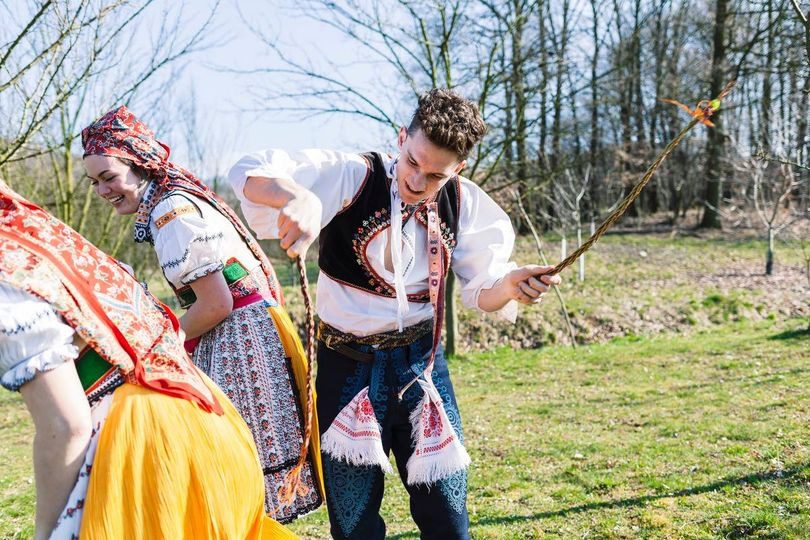One of the symbols of Easter is, of course, the pomlázka. It should be made by hand from willow twigs, with the simplest ones usually being made from 6-12 twigs, and the more complex ones can contain up to 24 twigs.
On Easter Monday, boys and men walk the streets and slap girls and women with pomlazka to give them the youthfulness and freshness of willow twigs. The name pomlázka, which comes from the word “rejuvenation,” is believed to be related to this tradition.
During the whipping, the boys recite various poems, and then the girls hang colorful ribbons on the boys’ pomlázka, give them painted eggs or other delicacies, and often spike them with alcohol.
In the past, boys would whip girls as a sign of affection. The girls would then matchmake boys by tying ribbons on their pomlazki. And the red ribbon meant that the girl loved that boy. Blue symbolized hope, and green was tied to show that the boy was one of the favorites. Yellow, on the other hand, indicated that the girl was disinterested.






